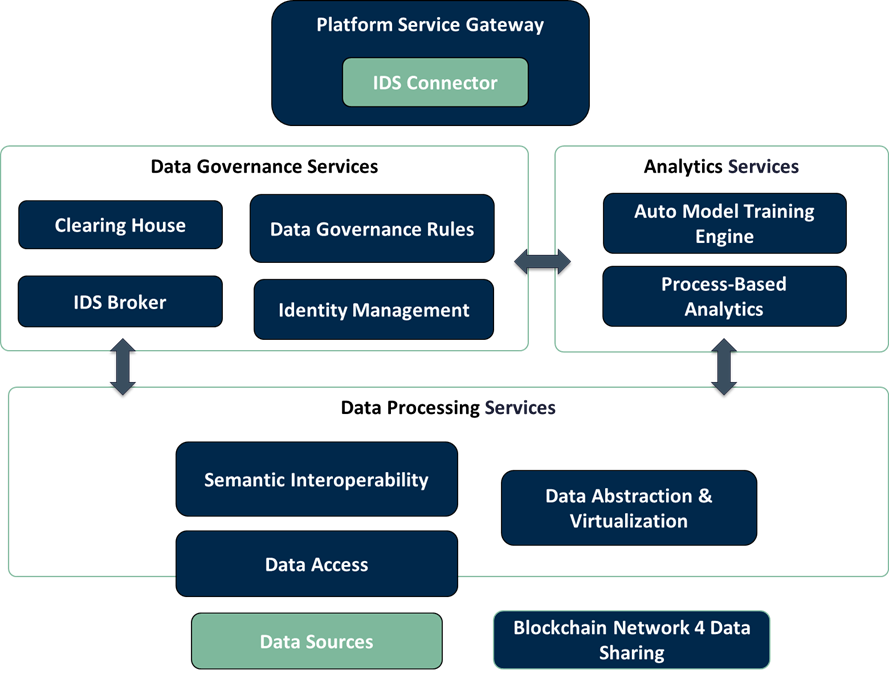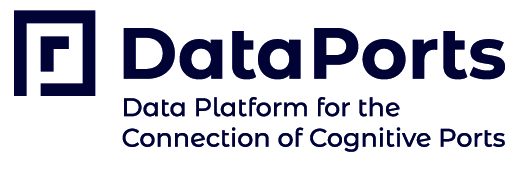The deliverables describing the second version of the DataPorts platform components are now available.
Deliverables D3.5 “Data Processing Services M27”, D3.6 “Data Analytics Services and Cognitive Applications M27” and D3.7 “Permissioned Blockchain Network M27” are now available on our website. These deliverables present the final design and implementation of the different services of the DataPorts platform, including their integration and a common example scenario of the use of the platform, which shows the interactions between the different components.

Deliverable D3.5 “Data Processing Services M27” presents the final implementation of the Semantic Interoperability Component and the Data Abstraction and Virtualization Component, which constitute the Data Processing Services of the DataPorts Platform, describing their functionalities, technological stack, and integration with other components of the platform. The Semantic Interoperability Component acts as a middleware layer between the Data Access Component and the upper layers, providing a common data model and interface to access the available data and metadata. The Data Abstraction and Virtualization Component acts as a link between the main data providers and data consumers of the DataPorts Platform. This component allows access to a variety of data sources through a single endpoint and prepares the data for consumption through pre-processing, filtering and data cleaning operations. In addition, the new features of the Data Access Component, which is the entry point of data to the DataPorts platform, are presented in this document.
Deliverable D3.6 “Data Analytics Services and Cognitive Applications M27” presents the final design and implementation of the components of the DataPorts Platform that enable AI-based services. These components are the Process-based Analytics component and the Automatic Model Training Engine. The Process-based Analytics component aims to optimise the business processes of the port by making use of Machine Learning techniques to predict future states of an ongoing process. The Automatic Model Training Engine makes use of the data available in the DataPorts platform to generate Machine Learning models able to predict indicators that are relevant for the port business. This component provides a dashboard to automatically create and train a model to predict a specific indicator, which can be deployed as a cognitive service.
Deliverable D3.7 “Permissioned Blockchain Network M27” provides the design details for the enhancements of the three Blockchain prototypes that have been developed in the DataPorts Project, namely the Data Governance, Verified Gross Mass, and Container Pick-Up. These extensions have been identified while implementing the first version of the prototypes or have arisen as result of new requirements. Special attention and efforts have been devoted to the integration of the prototypes into the DataPorts platform and the operational systems in the ports. The next and final version of the Blockchain prototypes implementation will be based on the presented design. The Data Governance Blockchain network is an integral part of the DataPorts Platform and provides the Data Governance Rules (implemented as smart contracts) and Identity Management. In addition, two components of the IDSA architecture are provided by this network: the IDS Broker and the Clearing House. In addition, two Data Sharing networks have been implemented to support internal port business processes by providing trusted data sharing. The implementation of these networks has been tailored for two DataPorts use cases. The Verified Gross Mass (VGM) Blockchain network has been developed for the VGM scenario of the Valencia Port use case and its purpose is to allow containers to arrive at the port with the verified gross weight, following the regulations. The Container Pick-Up network will facilitate secure information sharing between the Port of Thessaloniki and supply chain-related parties regarding the electronic request to pick up a container to allow a better organization and management of the delivery of containers.
